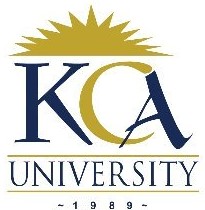
UNIVERSITY EXAMINATIONS: 2018/2019
EXAMINATION FOR THE DEGREE OF BACHELOR OF SCIENCE
IN INFORMATION TECHNOLOGY /BACHELOR OF SCIENCE IN
INFORMATION COMMUNICATION TECHNOLOGY
BIT2106 BCT2104 SOFTWARE ENGINEERING PRINCIPLES
FULL TIME/PART TIME/DISTANCE LEARNING
DATE: DECEMBER, 2018 TIME: 2 HOURS
INSTRUCTIONS: Answer Question One & ANY OTHER TWO questions.
QUESTION 1: 30 MARKS (COMPULSORY)
a) Requirements changes are inevitable; describe four sources of changes in requirements.
4 Marks
b) Describe four types software maintenance highlighting the importance of each.
4 Marks
c) Define a critical system, describing three types and examples of each.
5 Marks
d) Before you carry out the requirements engineering process it is always important to
undertake a feasibility study.
i. What is a feasibility study? 2 Marks
ii. Discuss three reasons why it is important to carry out a feasibility study.
3 Marks
e) You are the project manager of a software engineering team. You also charged with
responsibility of selecting the members who will work with you in the team. Discuss
six staff selection factors that you would consider during the exercise. 6 Marks
f) Describe “availability” as a desired software quality in software. Discuss four metrics
for availability 6 Marks
QUESTION 2: 20 MARKS
a) Define the following terms 6 Marks
i. Software
ii. Software engineering
iii. Software process
b) Using a clearly labeled diagram describe the Component-Based Software Engineering
process of developing software, stating two advantages and two disadvantages of the
process . 8 Marks
c) State and explain three types of interfaces that may be defined during the interface
specification activity. 3 Marks
d) Outline three challenges of using prototyping in software development. 3 Marks
QUESTION 3: 20 MARKS
a) Read the following scenario and answer the questions that follow.
“A video library stocks the both DVDs and video tapes. When a potential client visits the
shops; the librarian checks in the database to establish whether the client is registered or
not. If the client is not registered, he/she is advised by the librarian to register with the
library first before any services could be rendered. Once a client has been registered, he/she
is eligible to borrow at most one library item per week. The item borrowed must be returned
before any other item can be borrowed. If the client does not return the item within a month,
he/she is surcharged a certain amount per day up to the time he/she returns the item”
Assume that you are using “use case” approach to requirements elicitation to implement
the above described system: Required
i. Describe what a use case is. 2 Marks
ii. Show the notation used in a use case 2 Marks
iii. Identify the actors in the scenario above 3 Marks
iv. Draw a use case diagram to model the video library system. 6 Marks
b) Describe three types of non-functional requirements that must be established during
requirement engineering process. 3 Marks
c) Discuss four interactions styles at the interface stating two advantages and two
disadvantages of each. 4 Marks
QUESTION 4: 20 MARKS
a) An obselete software system could be defined as one that has reached the end of the
economic useful life and is due for replacement by another information system. Discuss
five symptoms of obselete. 5 Marks
b) Using a well labeled diagram distinguish between thin and fat client architectures.
4 Marks
c) Distinguish between static verification and dynamic verification. 4 Marks
d) You are involved in the Verification and Validation of a system in order to discover
defects. Required:
i. Describe two faults that you would put in your error check list for your static
analysis activity. 2 Marks
ii. State and explain five guidelines that you would follow when testing a system
in order to reveal defects. 5 Marks
QUESTION 5: 20 MARKS
a) Describe the components that make a Distributed System. 6 Marks
b) Assume you are software engineer and you are required to familiarize your self with
the ACM/IEEE codes of ethics. Discuss four principles that you would find in these
documents. 4 Marks
c) Discuss four software cost estimation techniques available to the project manager
stating when each is applicable. 4 Marks
d) After the requirements engineering process is complete, the SRS is written down.
Describe the SRS document stating the various guidelines you should follow when
writing it. 6 Marks
